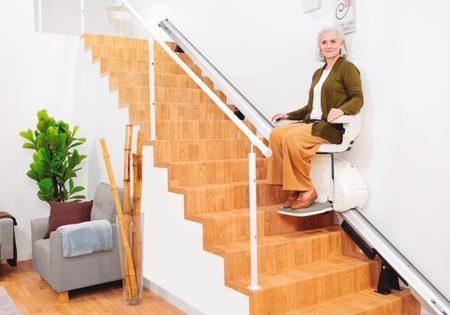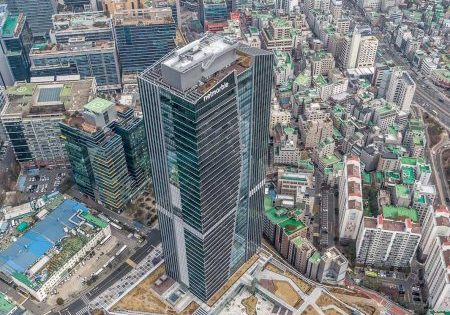In this Readers’ Platform, your author explains how ANACAM is always on the front lines.
by Titti Lo Papa
Safety in the workplace is, unfortunately, a highly topical subject, a “wound” in the production environment that is unable to heal. Even if the number of accidents in the lift industry is not very high, safety must be considered a priority — an investment and not a cost, and a necessary condition for any working reality, however small.
Prevention (i.e., the measures foreseen to prevent a harmful event from occurring) and protection (i.e., the measures foreseen to limit the consequences of a harmful event), represent two faces of the same coin. As such, it is impossible to think of reducing accidents without raising the cultural level of those who have responsibility for safety, as well as those who are subjectively active in the work.
ANACAM (the Italian lift industry Association), which represents more than 400 Italian industrial and artisan companies operating in the lift systems sector, has always exhibited great sensitivity toward safety. It could not be otherwise, given the nature of the activity carried out by its member companies and the significant risks employees are exposed to when carrying out this activity. ANACAM National President Andrea Codebò said:
“Certainly, one cannot exempt oneself from complying with all the provisions and measures necessary to reduce risks. Nevertheless, in order to be truly effective, the prevention activity must also be an ethical value, a sort of permanent attitude, a development strategy. It requires awareness and competence on the entrepreneurs’ part, as well as the involvement of all employees in actions aimed at protecting health and safety. Only in this way can it work.”
Precisely because of the importance of this topic, ANACAM is committed to reinforcing a culture of prevention through intensive and targeted training and information activities for its members, since even measures that may seem standard sometimes turn out to be completely ignored. It is, therefore, essential to never lower one’s guard.
ANACAM recently published the second edition of the book Elements of Risk Assessment and for Safety Management in Small and Medium-Sized Lift Companies by engineers Giuseppe Iotti and Paolo Tattoli. This book is not only the result of the deep experience of the two experts, but also of information and indications derived from the direct experience of all members. The aim of the publication, which takes into consideration as many as 40 possible risks for both the installer and the maintenance technician, is to examine the formal obligations, as well as (and above all), the substantial ones, thus supporting companies in the sector in drawing up risk assessment documents. It is a useful working tool for both owners and employees, for protection and prevention service managers, workers’ safety managers and consultants who can be unfamiliar with the specifics of the sector. The latest edition, published in 2021, is expanded and updated with respect to the previous one, and also reflects the historical moment we are going through. Indeed, it has a chapter dedicated to the pandemic and the rules that must be followed to contain COVID-19 contagion as much as possible.
“The prevention activity must also be an ethical value, a sort of permanent attitude, a development strategy.”
— ANACAM National President Andrea Codebò
Safety in the lift sector was also discussed during the last ANACAM National Assembly, held in June 2022 in Sicily. On that occasion, Italy’s Minister of Labour and Social Policies Andrea Orlando sent a letter to President Codebò in which he recognized the important role played by member companies operating “in a thorny sector that guarantees mobility to people, and, in particular, to those with greater fragility.”
“Your work is valuable,” Orlando wrote, “and the safety of the facilities you look after is also valuable for the common good.” He then went into detail about the activities carried out in recent times by his Ministry. The letter reads:
“In recent months, we have strengthened inspection activities by increasing the number of on-duty staff, as well as the powers of the National Work Inspectorate, [and] also [tightened] the suspension measures and the sanctions. We are also proceeding with the implementation of information coordination through the final implementation of the SINP system (Italian national information system for workplace prevention). Other regulations have been dedicated to improving training; strengthening the role of the person in charge; introducing (for the first time in our country) the obligation of training and updating for the employer himself; introducing the obligation of prior notification to the Inspectorate of occasional work (including self-employment occasional work); and supporting a greater involvement of joint bodies in the field of training.”
Referring to outsourced work, Orlando pointed out that:
“As in the sectors with the highest incidence of exploitative phenomena, it is necessary to bring under control contracts and subcontracts of sole manpower, as far as workers’ safety is concerned. And here I recall what was recently provided for in Legislative Decree No. 77/2021 with regard to the regulation of contracts in the public sector with the provision that ‘the subcontractor, for the services subcontracted, must guarantee the same quality and performance standards as those laid down in the contract.’ We must continue along this path of strengthening safety and transparency measures.”
During the meeting dedicated to safety, engineer Paolo Tattoli tried to clarify when a lift activity is considered a construction site. This rather delicate subject is still being defined and requires in-depth study. This is because, in the case of construction work, and therefore in regard to a construction site, there are very specific requirements to be fulfilled. Such preconditions are:
- Identifying a safety and health coordinator for the design and execution of the work
- Drafting a Safety and Health Plan [in Italian, Piano Operativo per la Sicurezza (POS)]
- Drafting a Coordination and Safety Plan [in Italian, Piano di Sicurezza e Coordinamento (PSC)]
Also read: ANACAM 2022
While waiting for more complete insight into the subject, Tattoli suggested organizing a POS for every ordinary activity, even the simplest and most obvious one, and transmitting it to the client in a formal manner.
The focus of the study then shifted to solo work. This topic required closer scrutiny, especially after a fatal accident in Italy in which an employee who had no back-up was found 18 hours after the accident. Beyond this specific case, a debate has been opened on whether technicians should work in pairs. Solo work is defined as such when it is performed by an employee in total autonomy, without supervision of a designated overseer, isolated from other workers and — in general but not necessarily — outside the site of the company to which he belongs.
In Italy, the law does not specifically address solo work as a hazard. Its assessment and the adoption of any corrective measures are entrusted exclusively to the employer. In reality, it is by no means a given that solo work is more dangerous than work carried out by a pair of technicians. Certainly, the risk assessment, in the case of lone work, must be more thorough: Each company should draw up working procedures that minimize risk where it arises and identify tools that allow remote communication with the worker, with the possibility of reporting an incident as soon as possible.
In this sense, Tattoli suggested that the mobile phone that is normally available to each worker should have the company number for emergency calls saved and easily activated, and that it should be equipped with GPS. He also recommended establishing a company procedure whereby the technician makes a call to his or her company office at predetermined intervals. He explained:
“Reference must always be made to the company’s Safety Document [in Italian Documento di Sicurezza Aziendale]. As such, if the risk assessment has identified a risk that, after possible improvement measures have been taken, results in a residual risk that is not acceptable, then the planned work cannot be carried out alone, but must be done in a different way.”
There is also a need for more careful and focused training of personnel assigned to solo work. In particular, management of emergencies must be documented so the technician knows how to behave to be in control of a situation, and knows which actions to take when necessary. Currently, there are “dead man” or “man down” types of devices available, which can send manual or automatic alarms via the GSM (Global System for Mobile Communications) system if the technician is in a horizontal position. These solutions, unfortunately, are unsuitable and not very functional due to the postures a technician must assume to maintain a lift — i.e. often horizontal or lying down.
Another difficult situation to handle, according to Iotti, is when a harnessed technician falls into a well while suspended. This is the so-called inert suspension syndrome. This type of position, in return, favors a reduced venous flow, which leads to a decrease in cardiac output and arterial pressure, resulting in a deficit of cerebral, cardiac and renal oxygenation. In this case, the technician must be able to call for help in a short time; otherwise, there is risk of death. To avoid this risk, the company should provide a team of two installers or maintenance personnel, unless it is guaranteed that there are other people on site who can help when work is being performed in remote and isolated locations.
Two elements make it worthwhile to examine subcontracting agreements, the responsibilities and obligations that remain with the contractor and any contractual precautions to be taken. These elements are:
- The fact that accidents in the workplace often involve subcontracted companies
- An increase in the use of third parties due to the tax benefits introduced by the Italian government to incentivize work on the removal of architectural barriers
Both are good reasons why it is useful to examine, in detail, the subcontracting reality.
Lawyer Costanza Nucci is ANACAM’s legal advisor and author of an article on the subject published in the June 2022 issue of ANACAM MAGAZINE (also available in English, as the magazine is bilingual). She explained that the contractor or subcontractor must, in any case, verify the safety conditions of the work entrusted to third parties, as well as the application of the provisions and the Coordination and Safety Plan. It must also verify the suitability and the technical and professional qualifications of the subcontracting company, to which it must forward all documentation relating to site safety. It must cooperate with the other companies and coordinate the various interventions to avoid so-called interference risks.
The contractor, even when subcontracting all the activities, is subject to specific safety obligations, the violation of which entails precise criminal, civil and administrative repercussions. Analyzing the various rulings, in particular the penal rulings from the Italian Supreme Court, which essentially deal with accidents at work, the tendency is to hold all the subjects involved in the work responsible, i.e., the client, the contractor and the subcontractors, as well as the figures who hold certain roles in safety matters. In particular, the contractor is held liable for the accident suffered by the subcontractor’s employee. This is either because it is the contractor itself that chose the subcontractor, or failed to control and supervise.
There are, however, cases of exemption from liability, such as when the work of the subcontractor is of a different technical character from that of the contractor, and when there is complete autonomy of the subcontractor without control or interference by the contractor. Other cases of exoneration may occur when there is a delegation of functions, even if the delegator remains obligated to supervise the proper performance of the delegate’s task. Exoneration may also occur if the accident can only be traced back to a worker’s conduct that must be abnormal, not foreseeable or preventable by the guarantors and beyond the contractor’s control.
The third issue of ANACAM MAGAZINE, published in September, is dedicated entirely to safety in the workplace. This is done through an examination of the subject from a regulatory point of view, with an analysis of the main risks to which technicians working on lifts and escalators are exposed. The culture of prevention must cover all aspects of the activity, and therefore also those relating to the necessary documentation. In particular, useful indications are provided for the realization of the POS. This plan cannot be fixed and unchangeable. On the contrary, it must be continually updated and customized in all aspects to include personal protective equipment (PPE). Another article in the September issue specifically takes stock of PPE, discussing delivery, wear and tear, maintenance and deadlines, without neglecting the importance of education and training of workers.
Get more of Elevator World. Sign up for our free e-newsletter.









